What exactly are monsters? Those terrifying, horrifying, ugly creatures that are designed to send shivers down your spine and make you jump? Or perhaps someone smarter, like Hannibal Lecter and the Joker? Yes, all of these monsters are terrifying, but they all serve a certain function and have a definite goal. While some of them make us feel frightened, others make us feel claustrophobic and anxious within.
While John Carpenter’s The Thing may make us sweat and gnaw our nails, David Cronenberg’s Brundlefly may make us feel sick to our stomachs. These two films did a terrific job with their monsters and succeeded as great pictures, but that is not the case with all creatures who appear on the screen.
Despite dying on-screen, only a handful remain unforgettable and never die in the hearts and minds of viewers. These creatures are essentially adventures in and of themselves, and it is a mix of various aspects that makes them powerful enough to give viewers a good scare and an adrenaline rush. In some cases, performers and special effects crews labor for hours to create something out of scrap materials, while in others, high-quality CGI is used to bring creatures to life.
Whatever the case, the adrenaline boost is enormous whenever these horrible creatures appear on television. There are now a variety of monsters and antagonists, such as aliens, ghosts, undead creatures, and so on. The genetically modified monsters, on the other hand, send shivers down one’s spine.
These horrible abominations come in a variety of sizes and shapes, but what sets them apart is that they were either created by a human who wished to play god by bending the laws of science, or the unlucky victim is a human who has been genetically transformed into a horrific thing.
This is a world where dread coexists with science, far removed from the perils of mythology and deity. In this video, we will take a look at 15 of the most bizarrely hideous genetically altered creatures that have appeared in movies. Let us get started without further ado.
The Flare Virus from Maze Runner
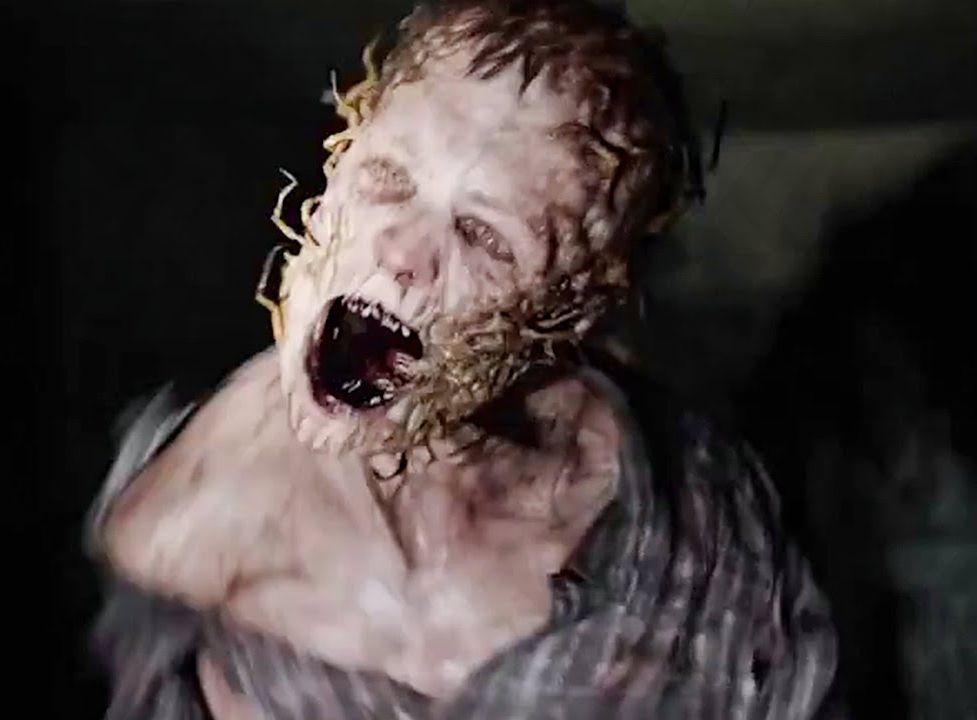
In October of 2136, massive solar flares or solar storms ravaged Earth and turned the regions between Tropic of Cancer and Tropic of Capricorn into a wasteland called the Scorch. The event completely destroyed the regions and countries between these two tropics, depriving them of almost all flora and fauna. Most damages were done to the countries close to the equator because the sun’s rays fall directly on the equator.
In the aftermath of these solar flares, a Post-Flare Coalition was formed by the governments of the remaining countries to govern the survivors. The Post-Flares Coalition conducted a six-month survey and found that a considerable population of survivors would have no resources to live.
This situation arose because polar ice caps were melting rapidly, and the global climate had changed for the worse because of the flares. The Coalition feared civil unrest, war, etc., and started exploring their options for population control, or rather a humane form of genocide. Ultimately, a scientist named Katie McVoy discovered the Flare virus. According to McVoy, the biological weapon led to a disease in a victim that would painlessly and quickly shut down a person’s brain. Furthermore, she theorized that the virus would gradually weaken as it spread to more and more hosts, and eventually, the spread would stop altogether. But it seems that the virus was fully studied before its release in heavily populated areas on the orders of Chancellor John Michael.
The Flare was highly unstable, and just like the Covid19 virus, it mutated into different variants. It turned the hosts into savage cannibals instead of killing them. Soon, it became airborne and turned into a pandemic. The Flare was designed to control the population, but apart from turning people into zombie-like beings, the Flare had another side effect—it was increasing the mortality rate of those uninfected. At this rate, no one would have been left, and Post Flare Coalition was turning out to be largely inefficient at controlling the spread. Naturally, another organization was quickly formed by pooling in all resources.
The newly formed Wicked or World In Catastrophe: Killzone Experiment Department was tasked with finding a cure for The Flare, which affected the brain as intended, but gave the victim excruciatingly painful headaches and death. The earliest symptom was usually a mild form of depression and gloom, which was followed by headaches, poor balance, sudden mood swings, etc.
Things worsen over time, and the victim starts to experience irrational anger, paranoia, and aggression. The third and penultimate stage comes when the victim starts to suffer from dementia and Alzheimer-like symptoms. In the final stage, the brain decays entirely, and the victim develops psychotic mental disorders, and they turn into inhuman, cannibalistic zombie-like beings.
Superdeep’s Underground Mutagenic Spores (Superdeep)

This Russian film focuses on Anna Fedorova, an epidemiologist who gets contacted by Colonel Morozov of the Russian Military Intelligence. He tells her that twenty people went missing, and sounds of unknown origin were recorded in Kola Superdeep, a borehole that’s 12000 meters deep. To the world, it’s just the deepest borehole in the world, but in reality, it’s a secret research lab.
Also, there were reports that the Head of Research at Kola Superdeep was hiding traces and evidence of an unknown disease. As the facility would get shut down within the next 24 hours, the Colonel asks Anna to join him on his visit and collect samples of anything medical or biological that could be weaponized. Colonel Morozov, Anna, and a team of soldiers led by Major Sergei MacKiev reach Kola Superdeep in Murmansk.
At Kola Superdeep, Anna discovers a cellular parasite that takes control of the body and mutates humans into hideous beasts with several deformities. But what’s worse is that it also melds and conjoins humans to form a monster that’s a combination of several hosts.
So what Anna discovered in the Superdeep was a cellular parasite that controlled the muscular and nervous system to transform people into hideous beasts. The cellular parasite creates other forms of monsters for different purposes. For instance, it melted the bodies of Major Sergei and a crew of Kola Superdeep named Olga. Later, they formed globules filled with spores.
These spores, in turn, infected other organisms. This particular form of mutation resembles asexual reproduction through spore formation, a process that’s seen in several ferns, mosses, and green algae. Thus, the cellular parasite can reproduce on its own, a capability that makes it a more significant threat than it already is. The cellular parasite behaved similarly to Cordyceps, a unique fungus that infects ants and then forces them to return to their nest, where it releases spores to infect the entire colony.
The final stage of the monster is the combination of several hosts into a large and powerful creature with the capacity of breaking through walls. These conjoined humans would continue to wail and scream as if they were still feeling the pain despite becoming a part of each other. This particular aspect gives an impression that the final form is a creature of undead nature, making it a giant melded zombie that craves more hosts.
However, it is important to note that despite being taken over by the virus, the victim may retain some or all of their memories from a time before the infection, as was seen in the case of Sergei. The creature prefers hot environments, and we know this because its safe haven was a place that was about 200 degrees hot.
Naturally, when the virus came into contact with environments that had temperatures around the freezing point, it got destroyed on a cellular level. The monster may be considered a version of the Greek monster Hecatoncheires, which had fifty heads and a hundred limbs. It is important to note that the film bears uncanny resemblances with Neil Blompkamp’s short film Zygote. The monster in this film was a golem made out of human corpses.
Pretorius Creature – From Beyond (1986)
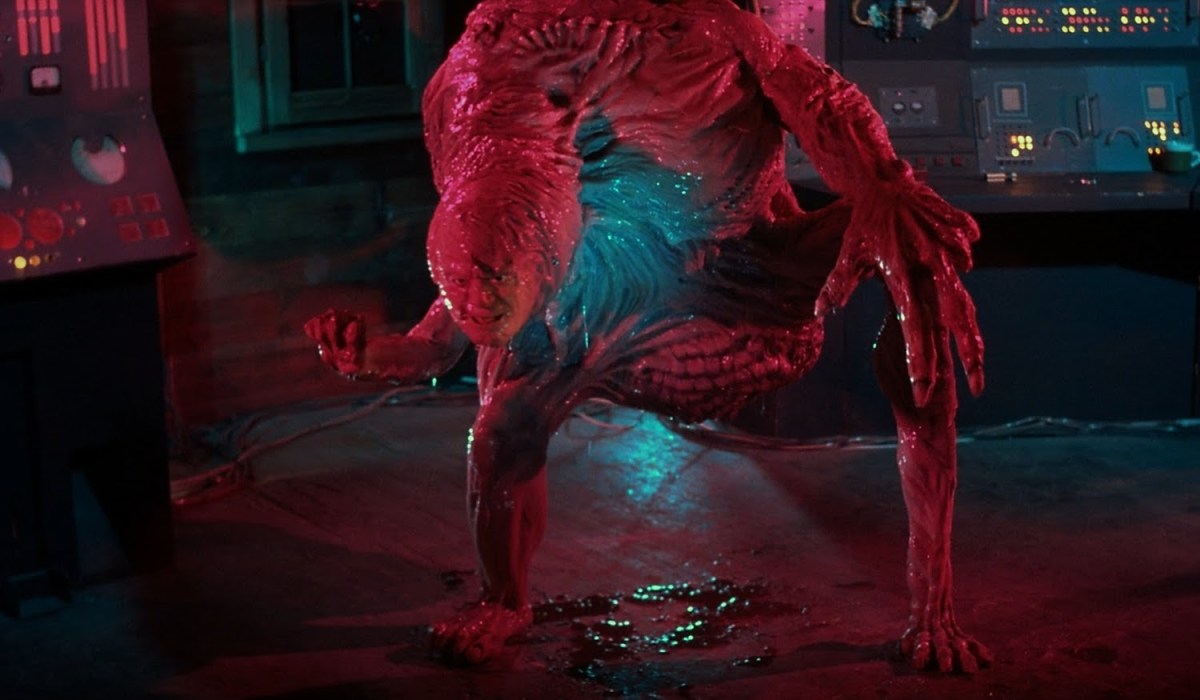
Scientists Crawford Tillinghast and Dr. Edward Pretorius developed a machine called Resonator that stimulates the sixth sense in humans by activating the pineal gland in the brain. After turning the machine on, Crawford sees creatures from other dimensions. He panics and goes to Dr. Pretorius so that he can help Crawford shut the machine down. But Pretorius refuses to oblige and soon gets killed.
Meanwhile, Crawford is taken to an asylum on suspicion of schizophrenia, where he is put under the care of the cruel Dr. Roberta Boch. However, Dr. Katherine takes Crawford’s custody and tries to uncover the mystery with the help of Detective Bubba. Together they turn on the machine once again.
We see Dr. Pretorius coming back to life in the form of an ugly Frankenstein-styled Lovecraftian tentacled beast who is hellbent on killing people. The climax is genuinely grotesque and savage, where two brain-eating tentacled beasts fight each other.
Interestingly Dr. Pretorius is named after the protagonist of Bride of Frankenstein and Dr. Roberta Boch after the author of Psycho. These names exemplify the themes of monstrosity and psychology. Dr. Edward Pretorius mutated substantially during his research in the film, but the most crucial and grotesque mutation was the one that affected his pineal gland. The pineal gland is an organ in the shape of a pine cone that doesn’t grow more than .8 centimeters and rests in the skull.
Its function isn’t fully understood, but researchers have discovered that it produces and regulates several hormones, including melatonin, which is best known for its role in regulating sleep patterns. But then, in lower vertebrates like lizards, fish, etc., the pineal gland functions as parietal eyes, which rests as an oval-shaped grey protrusion on many species of burrowing lizards, and other organisms. The animal doesn’t necessarily see from the pineal gland, but it is photosensitive in nature and impacts the circadian rhythm or the sleep cycle.
That’s the reason why the pineal gland is also called the third eye. In the case of Dr. Pretorius, his mutated pineal gland burst out of his forehead. Gross stuff! In the movie, Dr. Pretorius quotes, “The greatest sensual pleasure there is, is to know the desires of another.” He achieves this apparently higher form of sensual pleasure from everyone he can wrap a tentacle around.
Naturally, the film didn’t focus on the pineal gland’s ability to affect the sleep cycle; and rather, the film intended to picture the grotesque mutations that Dr. Pretorius underwent as a means to attain somewhat spiritual experiences. Pretorius’s ability to receive information increased manifolds, so much so that he could possibly experience beings from other realms and parallel universes.
Nemesis – Resident Evil Game Series
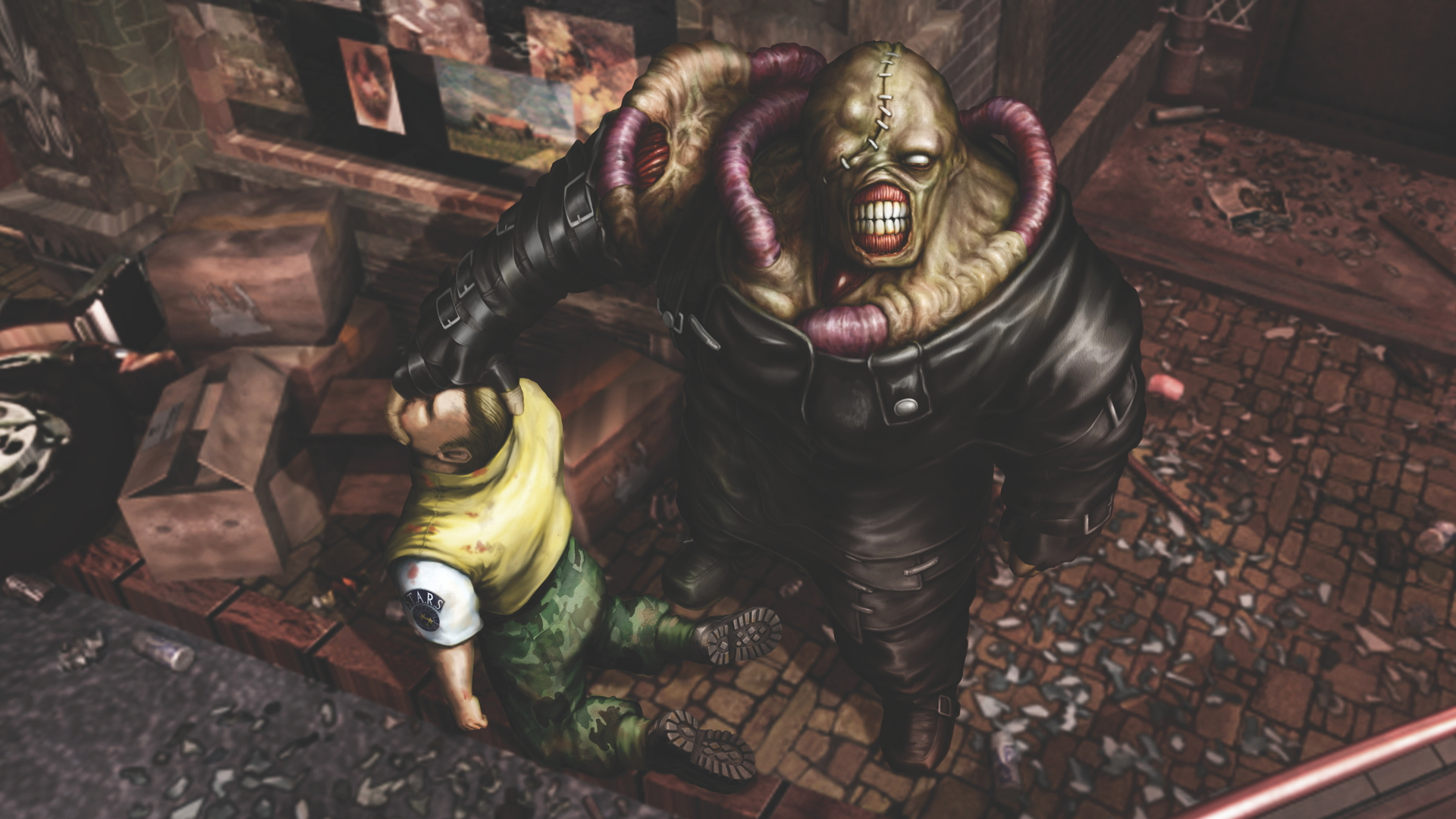
The Nemesis was introduced in Resident Evil 3: Nemesis as the prime antagonist of the game. The Nemesis T Type, more commonly known as Nemesis, was designed as an overpowering, huge creature that was more intelligent than its other Tyrant Type counterparts and could use weapons to track the victim anywhere. While the final form for the Nemesis was being conceptualized, several designs were considered, but the significant elements remained constant.
In the series, this hulking monster was created due to an infection of a T-103 model with a Nemesis Alpha parasite. The T 103 Tyrant was a humanoid weapon created with the intention of being the ultimate form of life. The origin of the parasite is detailed in the 2020 remake and revealed to be a genetically modified version of the Las Plagas parasite that was introduced in the 2005 game Resident evil 4.
After the infection, the Nemesis Alpha parasite controlled its host and nervous system, creating its own brain and allowing the monster to take precise instructions and make independent decisions. This decision-making ability was the reason why the Nemesis didn’t need constant directions from someone else.
In his initial form, the Nemesis wore gloves, boots, an overcoat, and a pair of trousers. Furthermore, he possessed a rocket launcher on his left arm. The Nemesis Alpha parasite secretes enzymes that give the monster extremely enhanced regenerative abilities, making him almost impervious to incoming damage. You may be able to put it down using an ample amount of ammo, but in the end, it would rise back up and resume its hunt.
But eventually, it would evolve and develop unexpected mutations and side effects such as damaged skin and surplus tentacles. In the end, the monster’s survival instincts overpower the programming and cause the host to reject the Nemesis Alpha parasite. After this, the monster transforms into a massive digestive organ, with several bony protrusions and enlarged tentacles.
Because of this sort of physiology, it only manages to crawl towards prey, and its intelligence also diminishes. Many publications consider Nemesis as one of the most intimidating and terrifying monsters in the gaming world, and if it’s a list about genetically mutated monsters, there’s no way Nemesis would be excluded.
Psychedelic Body-Melding Color Monster – (Color Out Of Space)
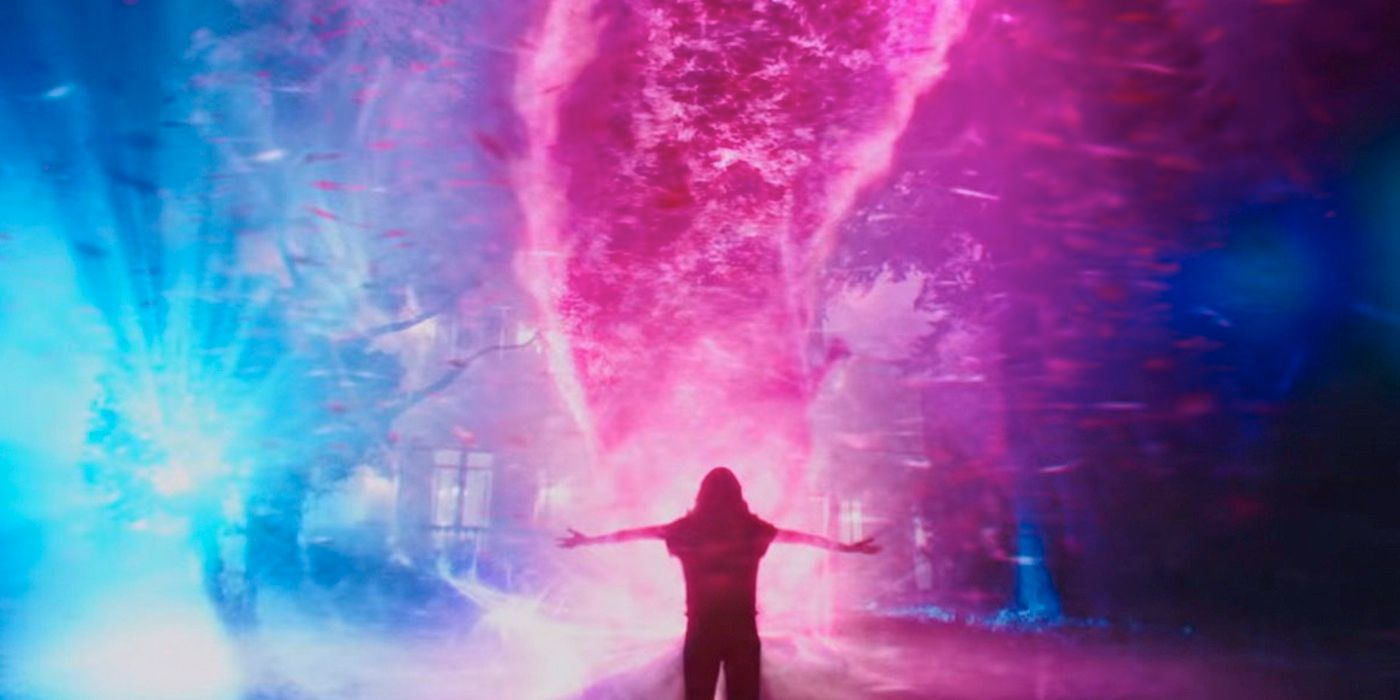
An unassuming family becomes the central victim of a malignant force that came to Earth and crashed in their remote estate in an iridescent meteorite. The effects on the family were gradual and steady.
Time started to dilate, the environment and nature assumed an otherworldly hue, and all things that were once beautiful and bright started to mutate and corrupt under the influence of this unseen monster and its magenta hue. Director Richard Stanley aptly employed his hallucinogenic sensibilities to bind his characters in an incremental, surreal dread.
The film largely revolves around an unseen alien entity that came to Earth and began to affect all living things in the vicinity, including plants. Its presence was only known through the color it radiated—the magenta color, which doesn’t exist as a unique wavelength in the visible light spectrum dispersed through a prism.
It is an extraspectral color that humans perceive through a particular interaction of the optical rods of the eyes that detect blue and red light in specific circumstances. Interestingly, blue is often attributed to good and red to evil. And, it seems that director Stanley suggests that the alien entity is beyond the concepts of good and evil, or maybe it is simultaneously evil and good.
We get a glimpse of the color monster’s homeworld in the form of a vision, it looks like a rocky planet that was filled with worms of all shapes and sizes. This planet had a magenta-colored star which engulfed the planet in magenta sunlight. But since there’s no known existence of a star with such colors, it may hail from another universe altogether. This explains the several abilities and powers of the Color monster, like shrinking and dilating time.
Apart from this, it also controls electromagnetic energy and other related aspects such as television and phone signals, etc. Targeted lightning strikes struck the meteorite in which the being landed, signifying that nature itself wasn’t far from its control. The lightning disintegrated the rock, and the constituents penetrated through the soil and reached the water table.
After spreading through water, it took a parasitic form and thrived on the energy of those it infected, getting more robust in the process. Due to it, flowers changed their appearance, new vegetation cropped up, vegetables ripened before their time, but they remained inedible nonetheless.
Apart from these aspects, the color monster and its energy had the power to meld organisms together. For instance, the alpacas in the film had merged with each other, just like the Dog Thing from John Carpenter’s epic film The Thing. Also, a mother and son duo had conjoined, ultimately taking a monstrous, animalistic form.
Rat King (Last Of Us 2 – Game)
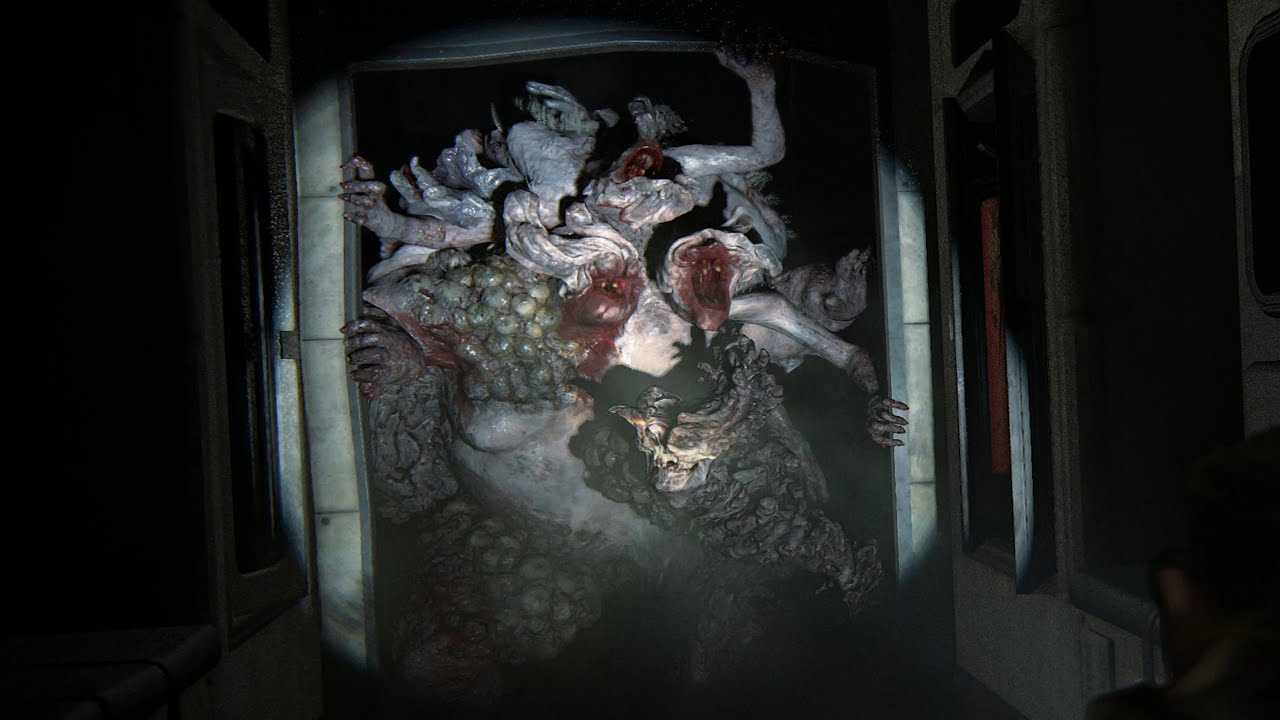
A brain-altering fungal infection started to spread in the year 2013. By 2033, more than half the population got infected by the Cordyceps Brain Infection disease, which manifests in four stages. The first stage is that of a runner, in which state people have increased speed but fail to land any severe blow on their opponents. After fourteen days of the infection, these runners upgrade into stalkers, who close in on their targets with tactical abilities and have the speed and strength of runners.
After a year, the stalkers evolve further into clickers. These creatures have further increased strength and stamina. Their faces get completely disfigured, and they move through echolocation, like bats.
The last stage of infection makes a person a bloater. Bloaters remain true to their names and resemble humanoid in stature, but apart from that, they lack any and all humanistic features. The bloaters have more strength than any of their previous forms. However, there’s another stage or rather an anomaly named the Rat King, which is the combination of several stalkers and clickers and a bloater.
This enormously powerful creature is strong and resilient. It has the capacity to destroy buildings and large vehicles. Rat King is assumed to be the result of a prolonged infection of about twenty-five years. It is an amalgamation of various creatures, and some may break off from the main body and attack individually. Killing it is difficult and time-consuming because it is practically a sink for incoming damage.
Mutant Tardigrades (Harbinger Down)
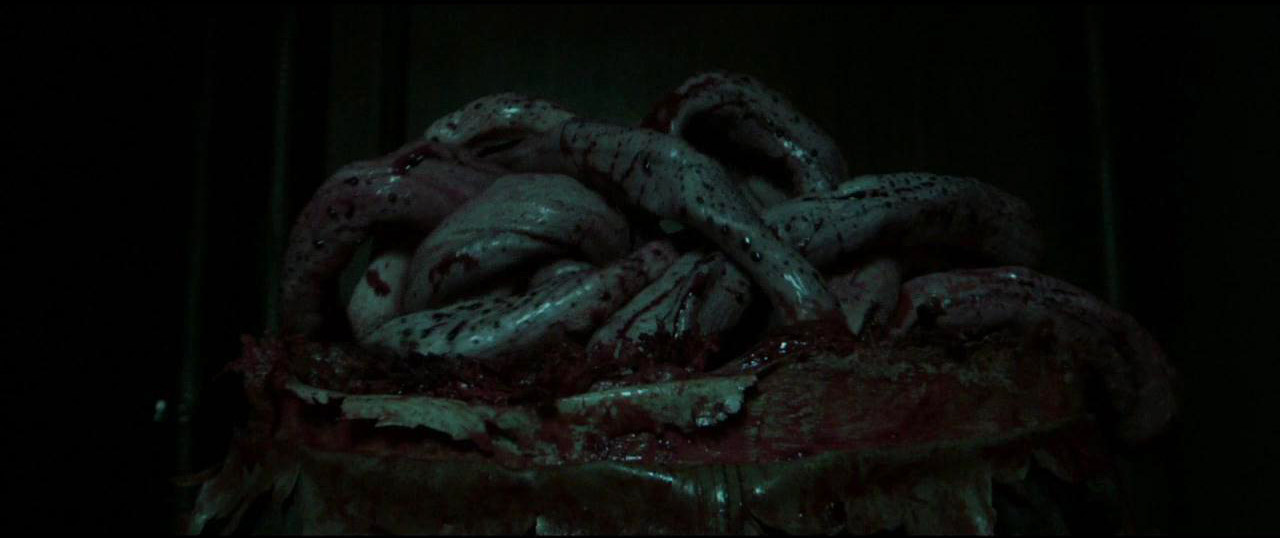
Biology students Sadie and Ronelle get on a crabbing ship with their professor Stephen to study the impact of global warming on belugas. However, they end up coming across a Soviet moon lander that had crashed into the Bering Sea in 1982. The sunken and frozen moon lander had human corpses inside of it. Sadie started to research the cosmonaut’s body and found that there were tardigrades on the body.
Tardigrades are extremophiles or highly hardy organisms that can survive extreme conditions and even cosmic radiation. In a strange turn of events, the corpse soon goes missing, but they later learn that the tardigrades had survived solar radiation and mutated, only to infect other living organisms to turn them into savage creatures with tentacles and brutally kill or infect others. The ship becomes ground zero of a small alien invasion.
Tardigrades are essentially eight-legged microscopic organisms and possess a cylindrical mouth with razor-sharp teeth. In the film, the mutated tardigrades act as parasites and infiltrate a host to take over the host’s blood, organs, etc., and in the process, the tardigrades transform their host into grotesque creatures with vaguely humanoid features.
These microorganisms take absolute control of the host’s body and thrive by taking over the body mentally and physically. But it is important to note that the resultant mutated humans don’t necessarily adhere to any specific shape because limbs and tentacles seem to be growing from almost any body part.
In the film, when the Russian consultant named Svetlana gets infected, her head opens up like a maw with razor-sharp teeth and her limbs transform into slimy tentacles with pointy ends. On the other hand, two other characters, Stephen and Dock, underwent similar horrid transformations. Interestingly enough, the bodies of Stephen and Dock couldn’t bear the mutations, and they succumbed.
The tardigrade infection also enabled Stephen to shoot corrosive fluid. At one point in the film, Graff, played by Lance Henriksen, mentions how the monster is able to bend steel as if it was rubber. To sum up, the mutant tardigrades can assimilate biomass, absorb DNA, shapeshift, infect others, and create several different objects from pure matter.
Necromorphs—Dead Space Game
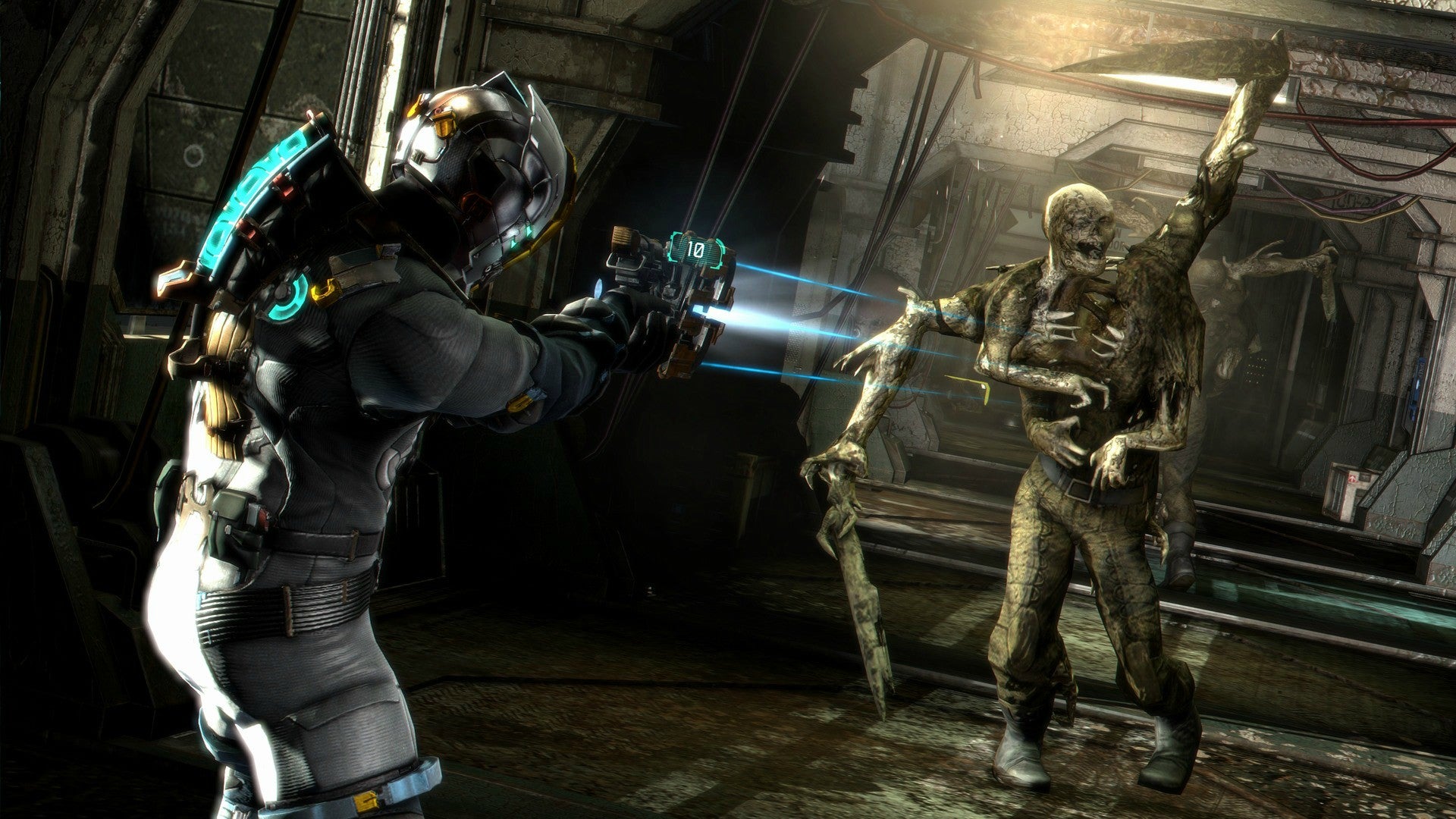
Necromorphs are essentially created through alien objects called Markers. These objects emit concentrated and targeted electromagnetic rays that change and reanimate dead tissue on a cellular level, hence creating Necromorphs.
The electromagnetic signal doesn’t just change the dead tissues but also alters the minds of relatively intelligent organisms that develop issues like dementia and also provoke suicidal and homicidal actions.
This lays out a rich field of fodder for future Necromorph infections. After creating a few Necromorphs, these undead beasts hunt other living organisms so that their corpses and carcasses could be used to create newer Necromorphs, either through infection or through the use of a marker.
The Necromorphs are the prime antagonists of the Dead Space franchise and range from tiny abominations to hulking monstrosities. Since they are already dead creatures, the best way to destroy a Necromorph is by dismembering it entirely. All Necromorphs are incredibly resilient creatures and can survive several extreme environments, including the vacuum of space.
This signifies that they don’t rely on respiration or any other vascular process. Several of them feature luminescent protrusions and tumors, which are filled with destructive fluids and violently explode when ruptured. It is not a surprise that Necromorphs infect other animals apart from humans.
In Dead Space Martyr, we witness a Necromorph fish that follows the same traits of common Necromorphs. A few of the most grotesque Necromorphs are Brute, Hunter, The Hive Mind, etc. Brute is one of the more hardy Necromorphs and remains encased within an exoskeleton made up of bone and calcified skin. Furthermore, this exoskeleton is spiky and extremely durable.
The Hive Mind looks like a massive worm with numerous tentacles protruding through its body. Like other bigger Necromorphs, the Hive Mind was also made up of several bodies, possibly hundreds of them. However, the deadliest antagonists of the franchise are the Brethren Moon.
They are also called Blood Moons or Brother Moons. These are incredibly massive Necromorphs that travel the depths of space and are believed to be the ultimate stage of a Necromorph’s life cycle. To learn more about the different variants of Necromorphs, please check out our video titled 14 Nightmare Inducing Necromorphs Variants From Dead Space Franchise – Explored In Detail.
Brundlefly – Teleportation Gone Wrong (The Fly – 1986)
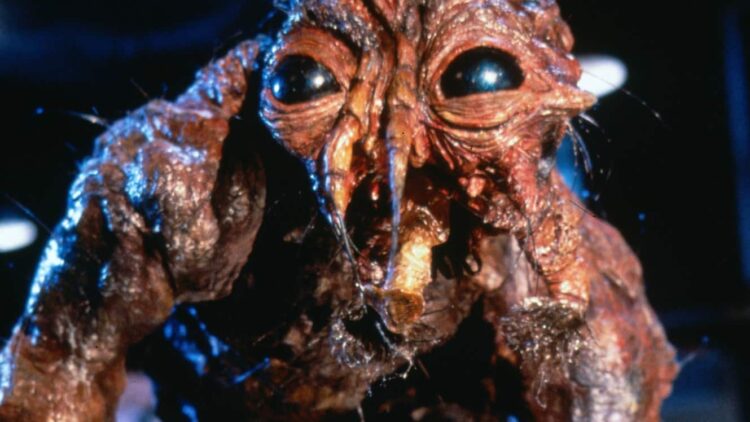
It is impossible not to include David Cronenberg’s The Fly when compiling a list about the greatest genetically mutated monsters. This epic Teleportation Gone the Wrong flick starred Jeff Goldblum in the lead role as Seth Brundle, an ambitious and eccentric scientist who attempts to win the heart of a young and beautiful journalist named Veronica Quaife, played by Geena Davis. Seth offers Veronica exclusive coverage of his latest invention, a telepod that facilitates the teleportation of matter.
Although the telepod manages to transport inanimate and inorganic objects, it has yet to transport living organisms or even tissues. But then, one day, Seth gets his much-awaited breakthrough when he successfully teleports a baboon named Typhoon. Seth starts to believe that he has mastered his scientific establishment.
Next thing we know, he tries to teleport himself into the machine he has created, but unbeknownst to him, a fly had entered the machine just as the teleportation was beginning. Brundle became a mix of human and fly. The fly’s DNA and his got amalgamated at the molecular DNA level, and Brundle’s human instincts soon gave way to uncontrollable primitive impulses.
Initially, Seth didn’t know that his DNA had spliced with that of a fly or even the fact that a fly had entered his telepod. However, right now, 50 percent of his DNA was a fly’s. This happened because he had merged with the fly, which implies that his telepod merged living things instead of teleporting them.
Over time, Seth’s skin began to rot, and he soon developed the ability to cling walls like a fly. His first stage of transformation gave him faster reflexes, heightened physical strength, craving for sugar, agitation, and coarse, hairy bristles. Furthermore, he failed to digest normal human food, so he started to regurgitate digestive enzymes on his food before consuming it.
As more time passed, he started to lose his fingernails, teeth, hair, and even ears. Once he learned the truth about teleportation, he deduced that the only way to increase the percentage of human DNA in his body from 50% to 75% was through using the telepod with another human. He soon got to know that his lover Veronica was pregnant with his child, and he intended to merge with her to become one ultimate family.
After abducting his love, Veronica, Seth’s transformation hastened. The little skin that was still there on his body began to erode and fall off. In the final stage of the transformation, Seth had metamorphosed into an insectoid, bipedal being. The Brundlefly had an elongated head, huge black eyes, a segmented body, and his limbs had grown extra joints.
Cat Cockroach And Human Cockroach Hybrid – The Nest (1988)
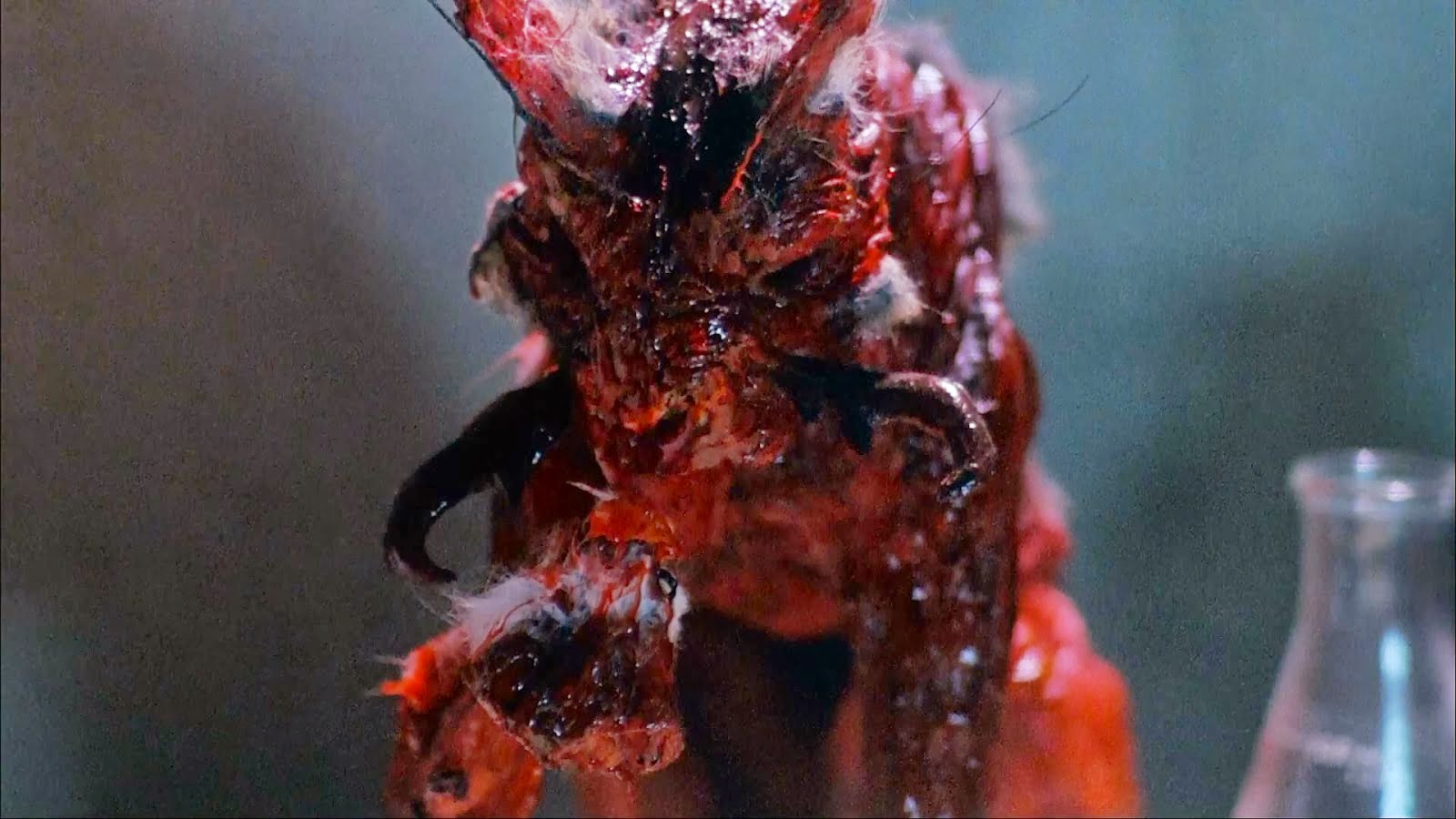
Most humans are designed in a way that they fear cockroaches and are disgusted by them. These little insects are one of the most resilient creatures on planet Earth, they have existed on Earth from a time before dinosaurs and will stay here even after humans go extinct. Furthermore, they are resilient to extreme environments and can shield themselves from nuclear radiation.
Now, what would happen if these creatures developed new powers and went from prey to predator? What happens when they develop carnivorous urges and start to devour other organisms way bigger than themselves? Well, this 1988 film has the answer for you. In the movie The Nest, a firm named Intec created biologically engineered cockroaches so that the insects could devour other cockroaches and pests.
These artificial roaches were supposed to die after one generation, but that didn’t happen, and they became carnivorous creatures that killed humans and animals alike. The infestation went out of control also because not only were they resilient to huge amounts of pesticides, but they also had the ability to assimilate DNA.
Furthermore, they had an increased level of intelligence and hunted in large groups. While they themselves were larger than regular roaches and black in color, they assimilated with other organisms to become hybrids. For instance, they assimilated with a cat, and the resultant monstrosity was a skinless cat with mandibles, numerous legs, and antennae that arose from the tip of the ears.
On the other hand, their assimilation with a human gave way to the queen human-cockroach hybrid or a Manroach. Even the Manroach was a skinless, skeletal humanoid with mandibles protruding out of its cheek and had patches of hair. This one was a hulking abomination that was made up of several corpses fused together, and many of the faces of these corpses had mandibles.
The film reveals that a rather evil firm genetically modified the cockroaches, and that’s how they now have new powers like asexual reproduction, etc. Because the females can now give birth to offspring, the resultant roaches are far deadlier than what Intec had created. The special effects used were top-notch and are comparable to other great movie monsters like The Thing.
Flood (Halo – Game)
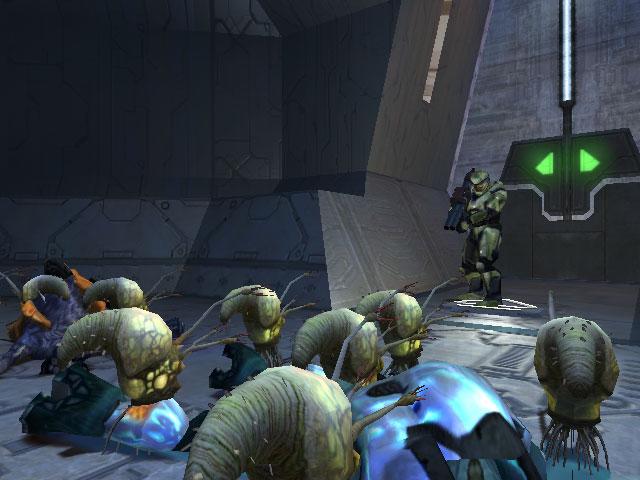
Before we get into what the Flood is, let’s understand a bit of background. So, the Halo universe has two crucial species named the Fore Runners and the Precursors. The Fore Runners were once upon a time an extraordinarily advanced and ancient alien race who ruled more than three million fertile worlds across the Milky Way Galaxy.
But their empire, Ecumene, largely dismantled a hundred thousand years ago. On the other hand, the precursors were a monstrous, Lovecraftian race that preceded even the Fore Runners, who had the ability to travel between galaxies and accelerate the evolution of sentient life.
Over time, the Precursors became more technologically advanced than the Fore Runners. But then there was a war between the two ancient species in which the Fore Runners annihilated the Precursors. A few of the Precursors turned into dust that could regenerate into their previous form.
Over time, this dust became corrupt and caused horrific diseases and mutations. The Precursors embraced this corrupted dust and became its part, ultimately giving rise to Flood, and swore vengeance against the Fore Runners.
The name Flood itself is derived from religious stories, just like many other names in the Halo franchise. Now, the Flood themselves are parasitic organisms that infect sentient life forms with sufficient size. They seek to stick their sharp spines into a host to penetrate the host’s nervous system.
The host becomes incapacitated, and the infection seeps deep into the host, which then begins to mutate, ultimately coming under the control of Flood. Depending on the condition and size of the host body, they are converted into several forms that grow an insatiable hunger for more food. Larger hosts are mutated into forms that are fit for combat and grow long tentacles that are used as whips.
They essentially serve as demonic entities. The parasitic nature and lifecycle of these monstrous entities can be compared to several real-life parasites, such as the Leucochloridium paradox, which leads to the growth of unnatural and malformed limbs in amphibians. Also, their power to alter their environment is comparable to the parasitoid wasp that uses spider webs for protection.
Mysterious Body-Mutating Red Liquid – Blood Glacier (2013)
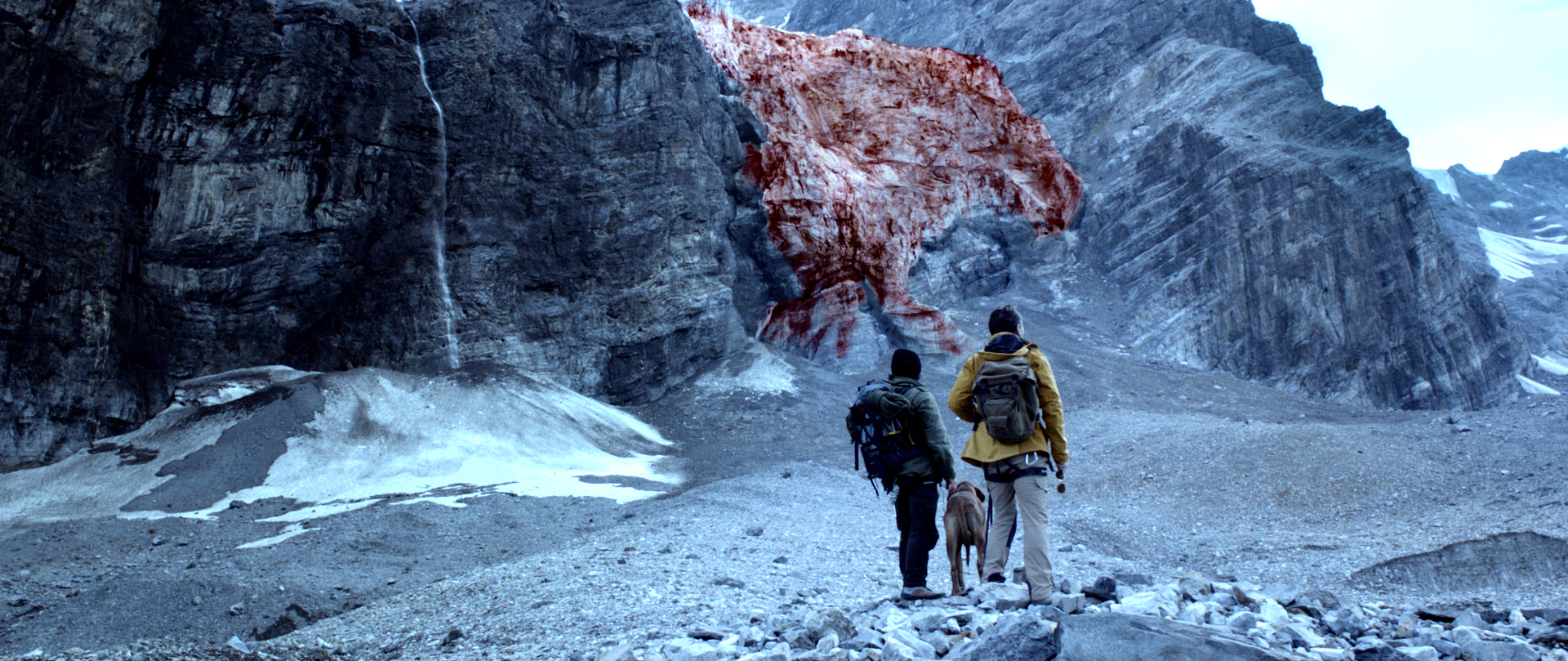
A team of scientists arrives deep into the foothills of the Alps to study the effects of global warming on the surrounding glaciers. Soon, the scientists discover a strange red liquid oozing from one of the glaciers. Furthermore, it seemed to change the genetic makeup of any animal that came in contact with it.
The genetic changes start occurring inside the stomach of the animal as the red liquid combines the DNA of the prey with the DNA of the predator. This resulted in the forming of new hybrid organisms inside the host’s stomach, which eventually burst out of the host’s stomach, much like the chest bursters from the Alien franchise.
These deadly and mutated lifeforms will seek to kill anything that moves. When most of the scientists become prey to these horrid creatures, a technician named Janek rises to save the remaining men and the facility. However, his prime concern is the arrival of a supervisory team headed by a minister, and the team also includes his ex-girlfriend.
The film’s blood glacier is a reference to the real-world event of what is called a blood fall, in which glaciers seem to ooze out a red blood-like substance. Blood Falls is an outflow of an iron oxide-tainted plume of saltwater, flowing from the tongue of Taylor Glacier onto the ice-covered surface of West Lake Bonney in the Taylor Valley of the McMurdo Dry Valleys in Victoria Land, East Antarctica.
Chemical and microbial analyses indicate a rare subglacial ecosystem of autotrophic bacteria developed that metabolizes sulfate and ferric ions. Likewise, the film’s prime antagonists are single-celled, blood-red microorganisms that were the reason why the glaciers turned red. Furthermore, they were responsible for various mutations and the creation of hybrid monsters like a moth-deer hybrid, beetle-fox hybrid, etc.
These hybrid combinations remind us of the Brundlefly, but the special effects could have been done better. It is largely unknown how the bacteria managed to combine the DNA of two organisms. The plot of the film is not altogether fresh and dwells on the overburdened themes of impending doom.
The scene where Janek tends to his ailing dog is heart-wrenching, and we couldn’t help but relate this scene to The Thing’s Clark and his relationship with the sled dogs.
Intelligent Judas Breed Humanoids – Mimic
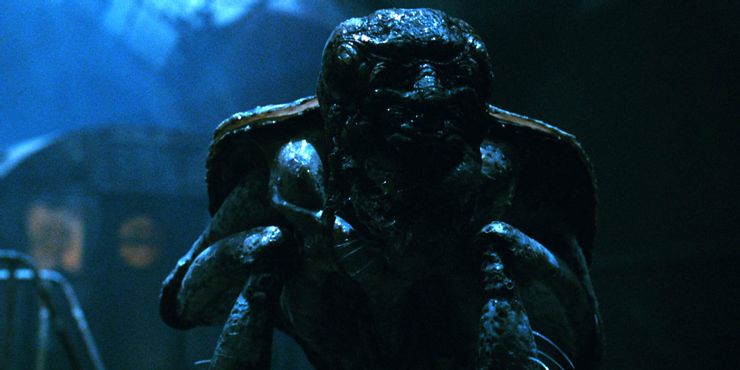
After Manhattan gets plagued with an infestation of disease-spreading roaches, a scientist does what any scientist would do in a sci-fi movie. Dr. Susan Tyler genetically engineers a mutant insect species to kill the cockroaches.
This new breed, called the Judas Breed, was supposed to die after one generation as they were all created as females, however, they started evolving into a dangerous species with the ability to mimic their prey, including humans.
These mutated insects went on to evolve a thousand times in a span of a few years and grew extremely intelligent for their kind. In one of their mimicking styles, they would carve out human faces from corpses and wear them on their own heads. Furthermore, they would wrap their wings around their bodies, and in this state, they resembled a human wearing a long overcoat.
Guillermo del Toro himself designed the first concept art for the Judas Breed or Mimic, and it was clear from the drawing that del Toro wanted the audience to see a person in an overcoat but also realize at the same time that it was not a human.
Del Toro has established a legacy through films like Pan’s Labyrinth won three Oscars, and The Shape of Water bagged him two Oscars for Best Picture and Best Direction in 2018. Dr. Susan had created these monsters using the DNA of a Mantis, an insect that is known for mimicking others. The strong pincers of the Judas Breed could easily rip apart humans.
The only drawback that these creatures suffered was they couldn’t mimic human speech. Del Toro used the creature’s physiology to create an illusion that it was a human instead of an insect. After the initial inspiration and thought, del Toro brought in the legendary TyRuben Ellingson as the creature designer. The initial design had a hat on the mimic’s face, but it was later changed to a hood.
Del Toro’s primary design remained the reference point for Ellingson, who gave the creatures a further heightened outlook by covering Judas Breed’s face with its mandibles. In the film, Susan had created a hybrid between a termite and a mantis.
The resultant creature was supposed to release enzymes that would accelerate the metabolism of cockroaches, which in turn would have made the cockroaches burn their calories at a much faster pace and would ultimately starve to death.
They were all females and were designed to live only for a few months, ensuring that the Judas Breed wouldn’t turn into another infestation. However, their genetic splicing allowed them not just to evolve thousands of times but also enabled them to reproduce asexually.
DNA Spliced Human-Animal Hybrid – Dren – Splice (2009)
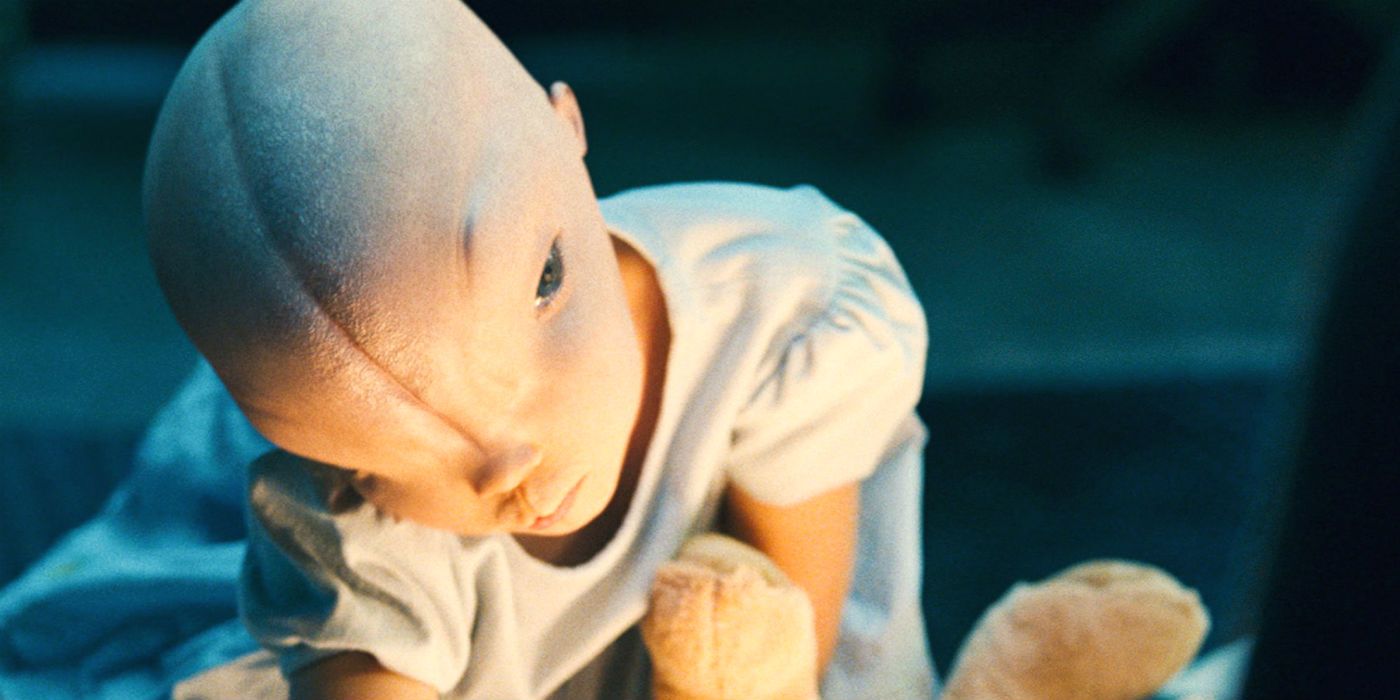
In another case of Science Gone Wrong, two geniuses of the biotechnology engineering world, Clive and Elsa, specialize in splicing or intertwining the strands of DNA in order to create new hybridized animals and creatures. Despite their astounding success in their field, they desire more and wish to create something using human DNA.
But their plans are ruined when their biotech firm refuses such sort of a project calling it too ambitious. As would be expected, Elsa and Clive finally go on with the experiment in a secret facility keeping the experiment a secret from their superiors. The final result of this ambitious project was a creature named Dren.
She was an extraordinary creature with incomprehensible levels of physical and intellectual development. She is far superior to humans and exceeds the couple’s expectations. However, Elsa and Clive’s most tremendous success soon becomes their worst nightmare.
At birth, Dren looked like a heavily deformed creature with no limbs or visible differentiable body parts. But as time passed, she became more and more humanoid in appearance. In her most evolved form, she resembled a hairless human.
Furthermore, she had a tail ending in a pointy tip, four fingers on each hand, black eyes, webbed feet, etc. As far as her speech was concerned, she could only create a few sounds like screeches of birds. But what was more thrilling about Dren were her butterfly-like wings and aquatic lungs, which forced her to go underwater every few hours.
If you thought that the weird was over, then no, in the latter half of the film, she transformed into a male, revealing that she was a hermaphrodite. But what makes the character of Dren one that would give you aversion and nausea is that the human DNA in her had come from Elsa, which makes her Clive’s daughter.
But, Dren and Clive consummate, giving the film strictly incestuous and pedophilic themes. After her conversion into a male, she goes on to assault Elsa, which makes the film further disturbing.
The Thing (1982 and 2011)
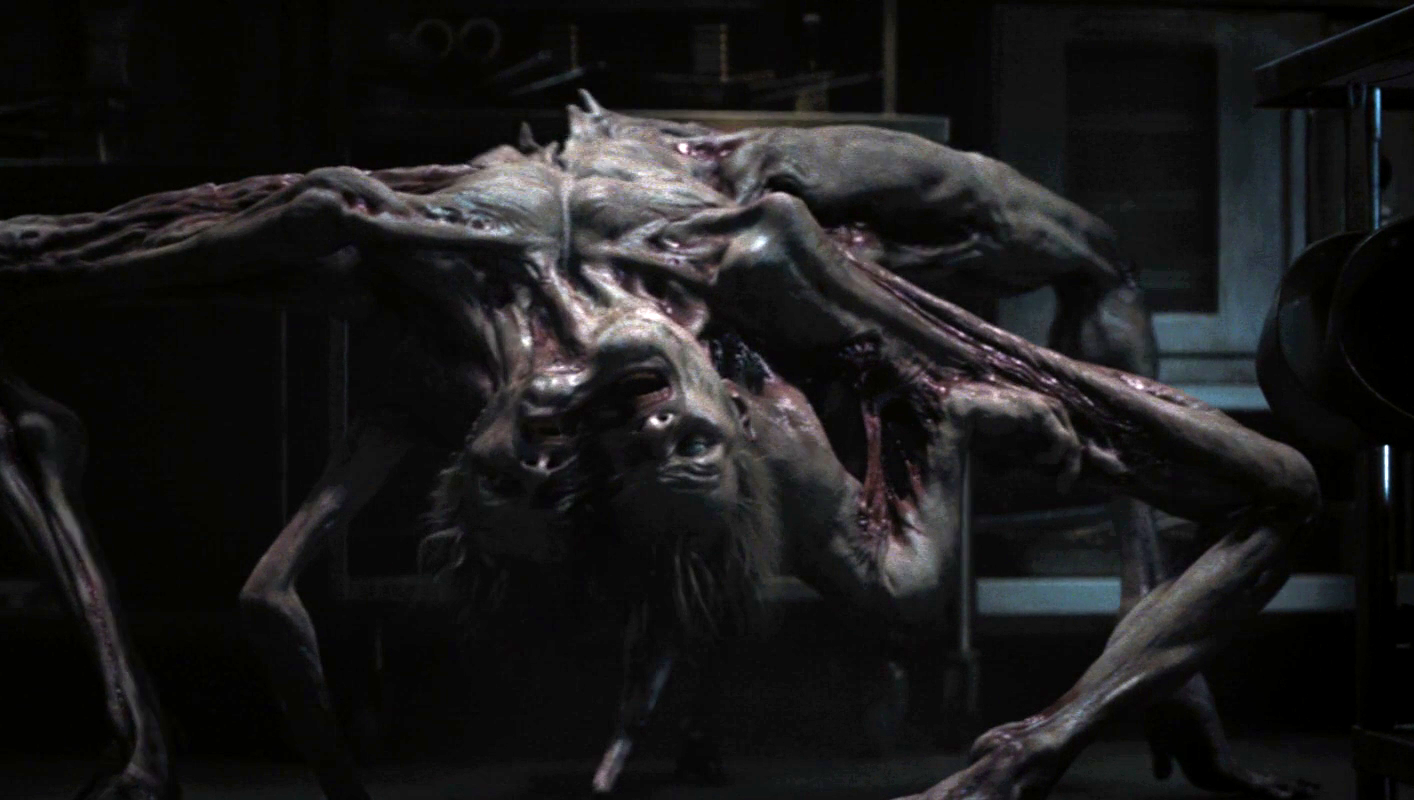
The Thing is one of the most horrific and intelligently created creatures ever to be depicted in film history. It was the main antagonist of the 1982 masterpiece by John Carpenter and also its 2011 prequel. It has the ability to assimilate with other organisms so that it can survive and spread.
Unlike most creatures, it doesn’t necessarily have any specific physical form or anatomy, and it simply replicates the organism it assimilates with, making it a master shapeshifter. This replication takes place on a genetic level and it seems that flowing blood helps in the process, which happens only when the Thing comes in physical contact with the host. According to the film, it was found by Norwegians researching in the Antarctic regions and then by Americans on US Outpost 31.
We’ve learned from the two films and various literature that The Thing has existed in the universe for millions of years, annihilating thousands of planets and assimilating millions of species. Through assimilation, it gains not only the host’s physical attributes but also its intelligence. The genetic information of all these species has remained with The Thing. Furthermore, it’s a master of rearranging its anatomical, cellular as well as genetic makeup. When under attack or caught during assimilation, The Thing reveals its monstrous form and can be lethal for the opponent.
However, mostly it chooses to remain covertly amidst others, blending with them and waiting for the right opportunity to attack. It can take various forms, and each part of an assimilated Thing’s body tends to act independently and has a mind of its own. However, its intelligence is directly proportional to the size and evolutionary development of its hosts.
Like we saw in the 1982 film, it could transform the chest of a human into a massive jaw with razor-sharp teeth, just the way it could grow spider legs from a person’s head. In the Dog-Thing, it developed numerous tentacles from its body. The Thing has the singular agenda of replicating as many organisms as possible and reducing the number of enemies. Ultimately, it would take control of the entire planet.
It’s a highly intelligent and perceptive organism that waits for its victim. It hunts but does so with extensive planning, and the execution is mostly successful. If you wish to explore our in-depth analysis of The Thing creature, please check out our video titled The Thing – Anatomy, Real Form, Timeline, And Future Of The Franchise Explained In Detail. Find the link in the description.
